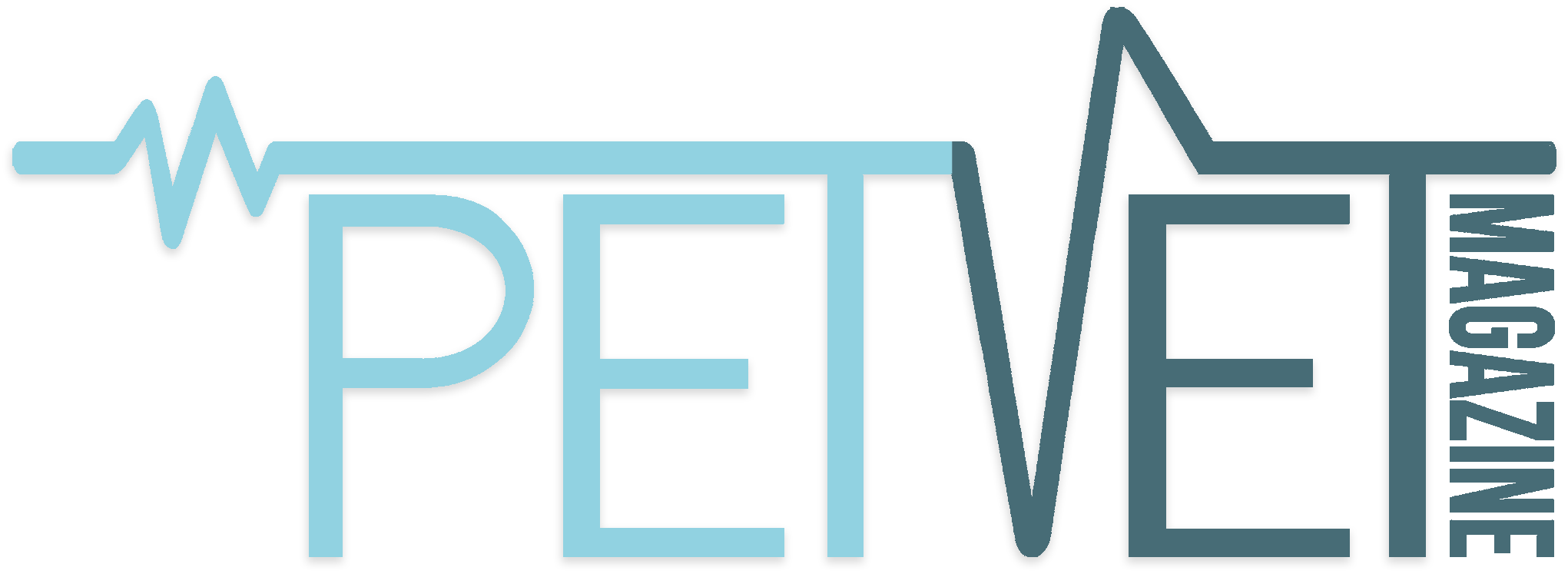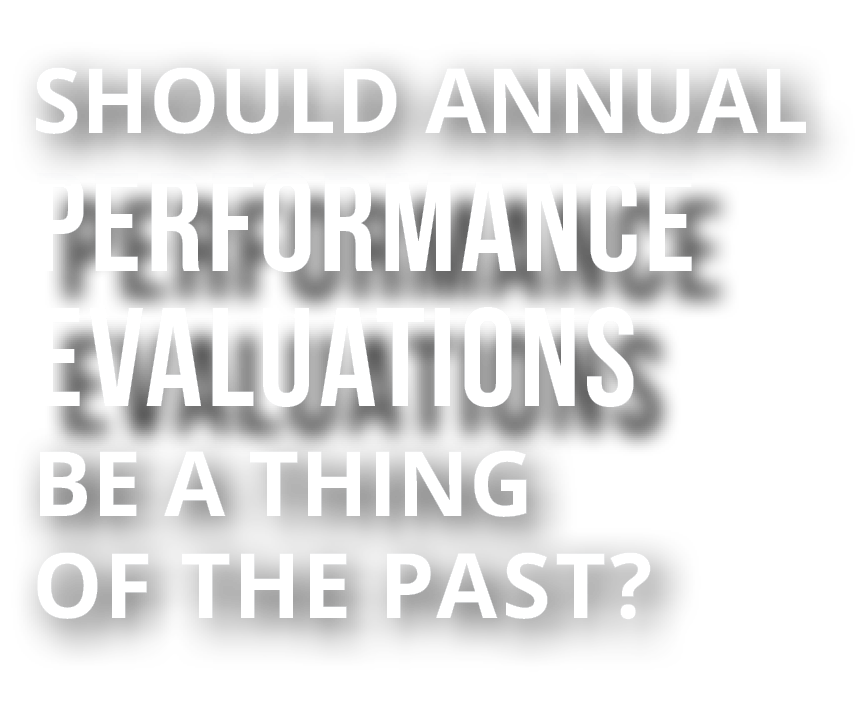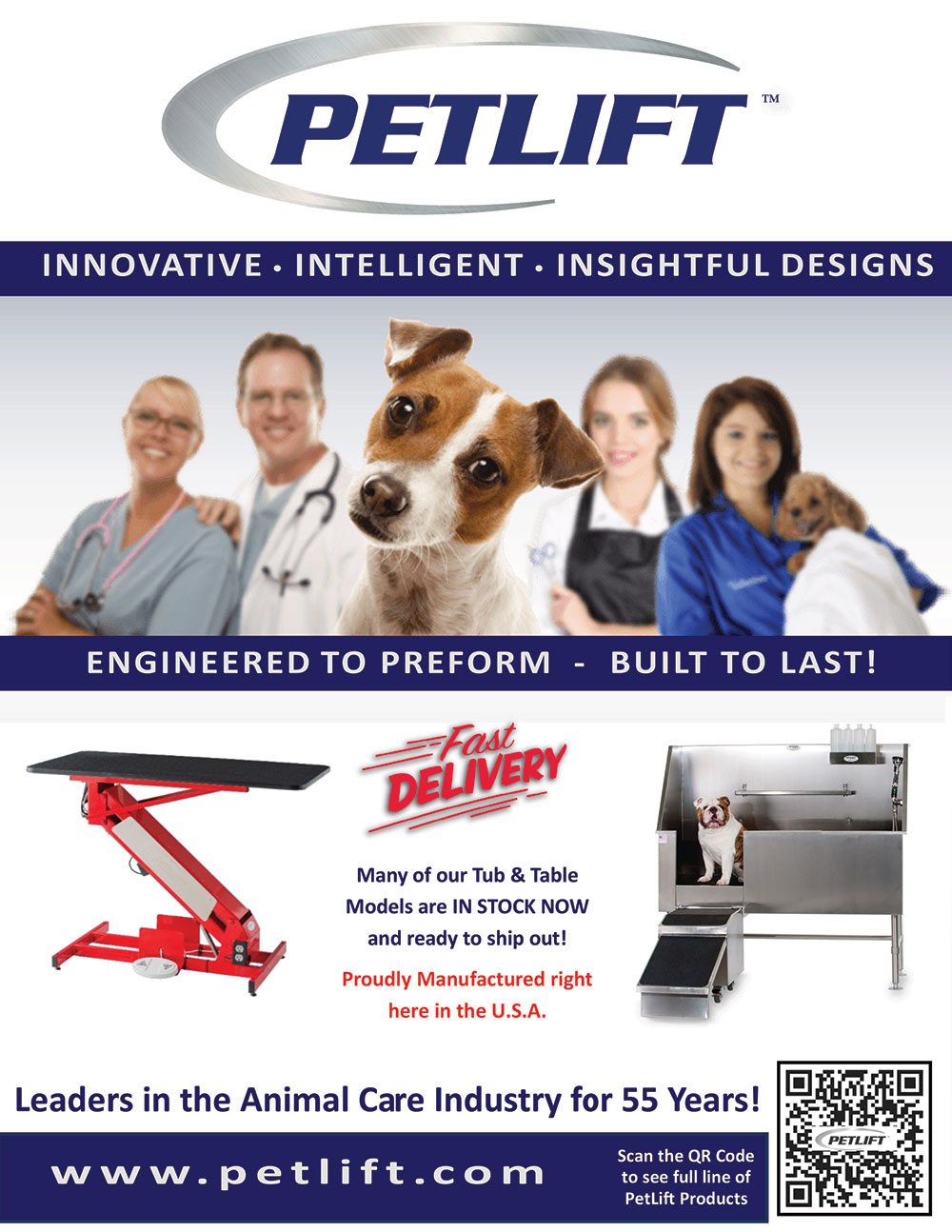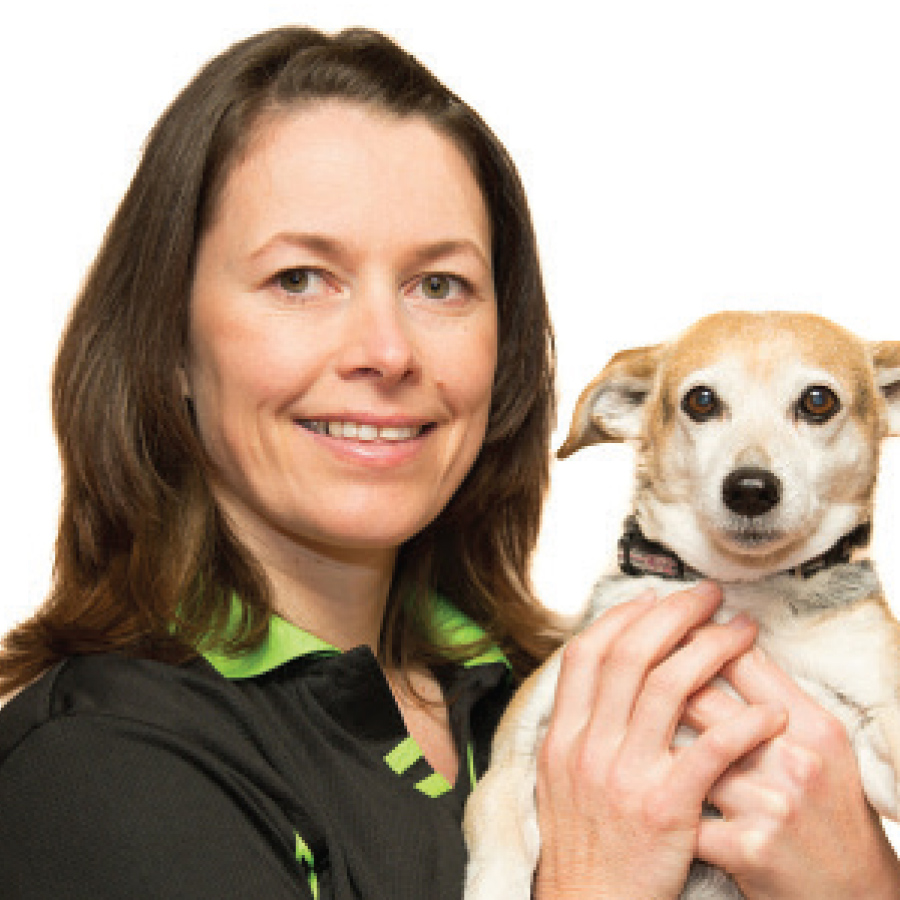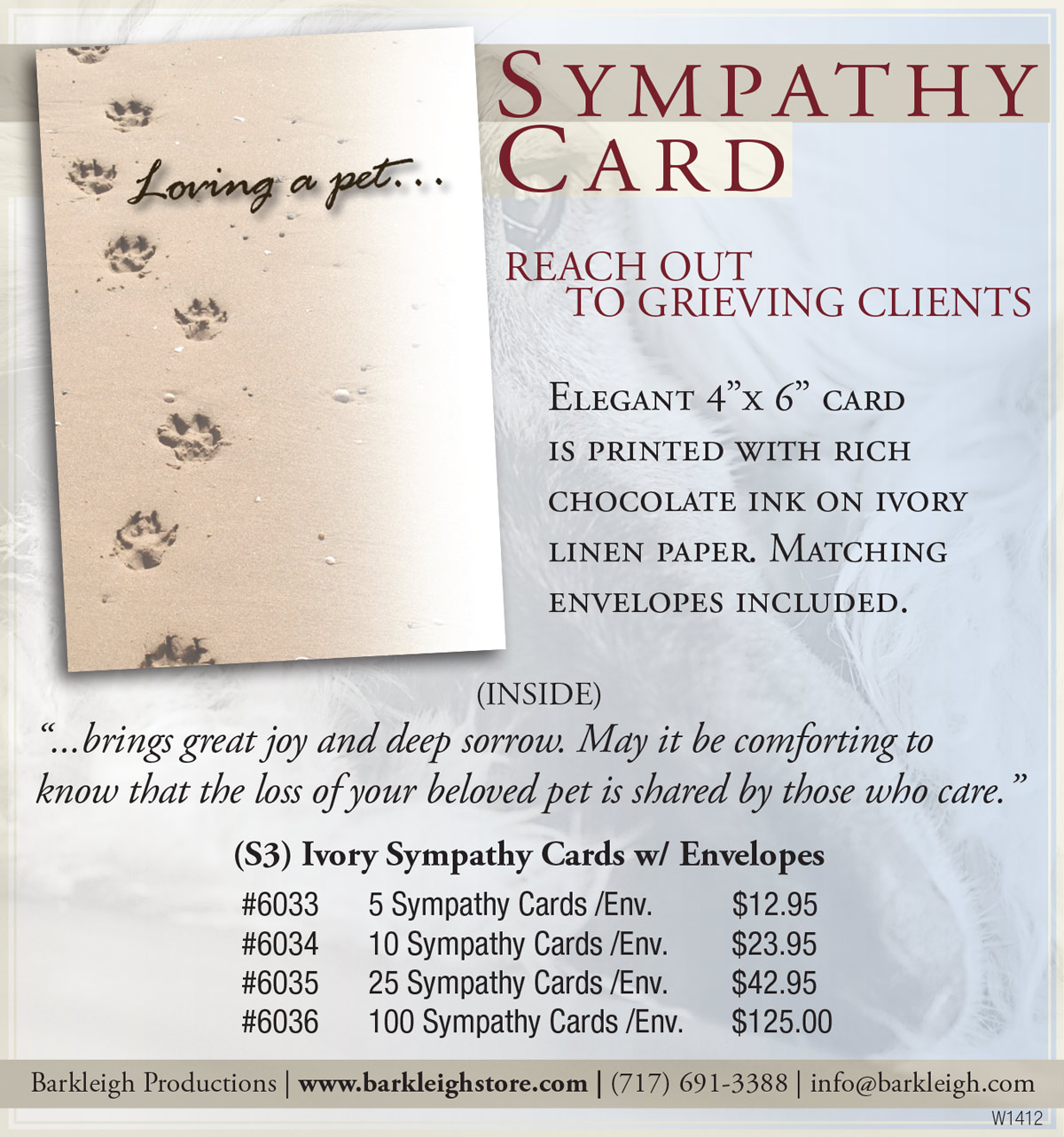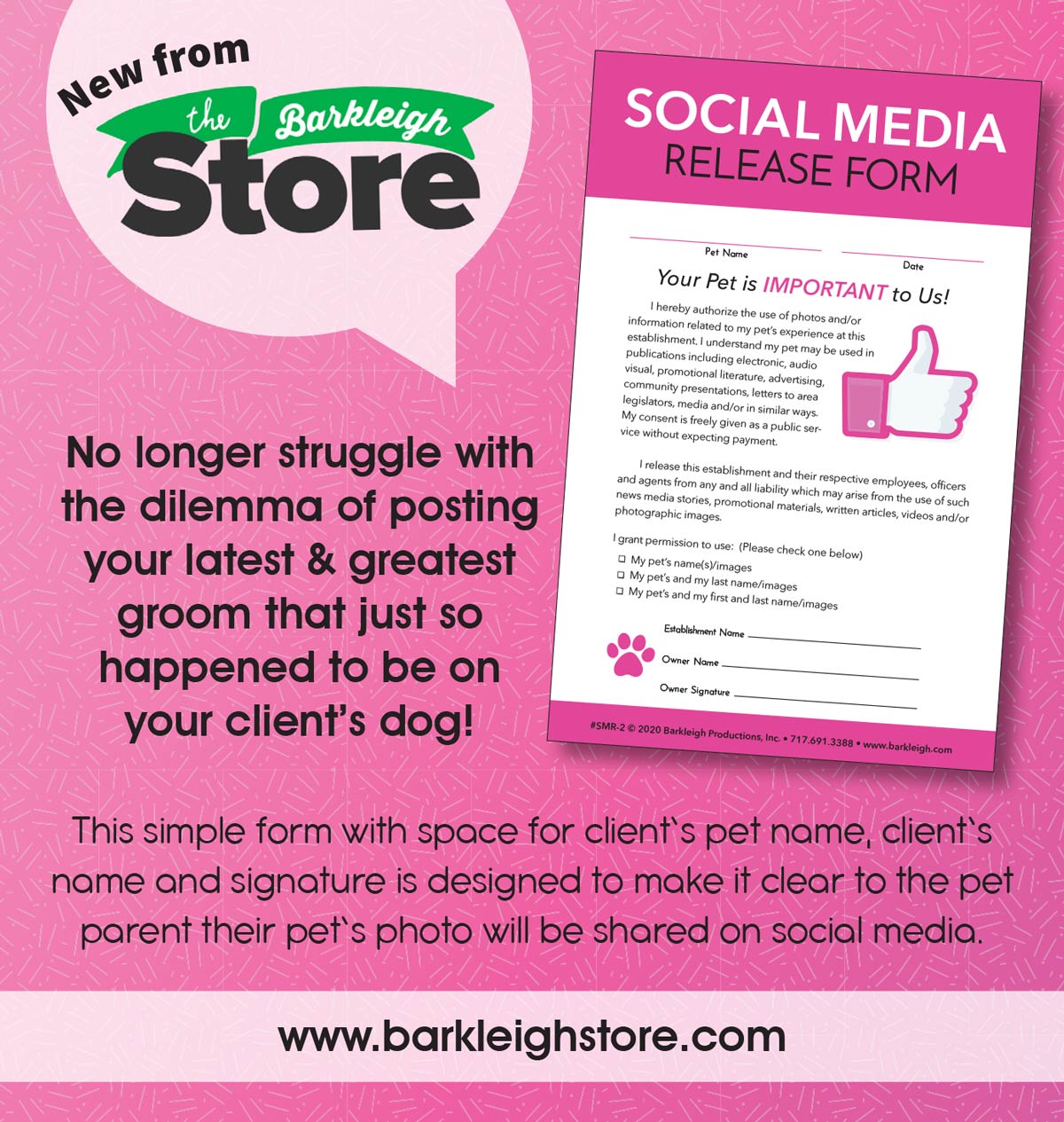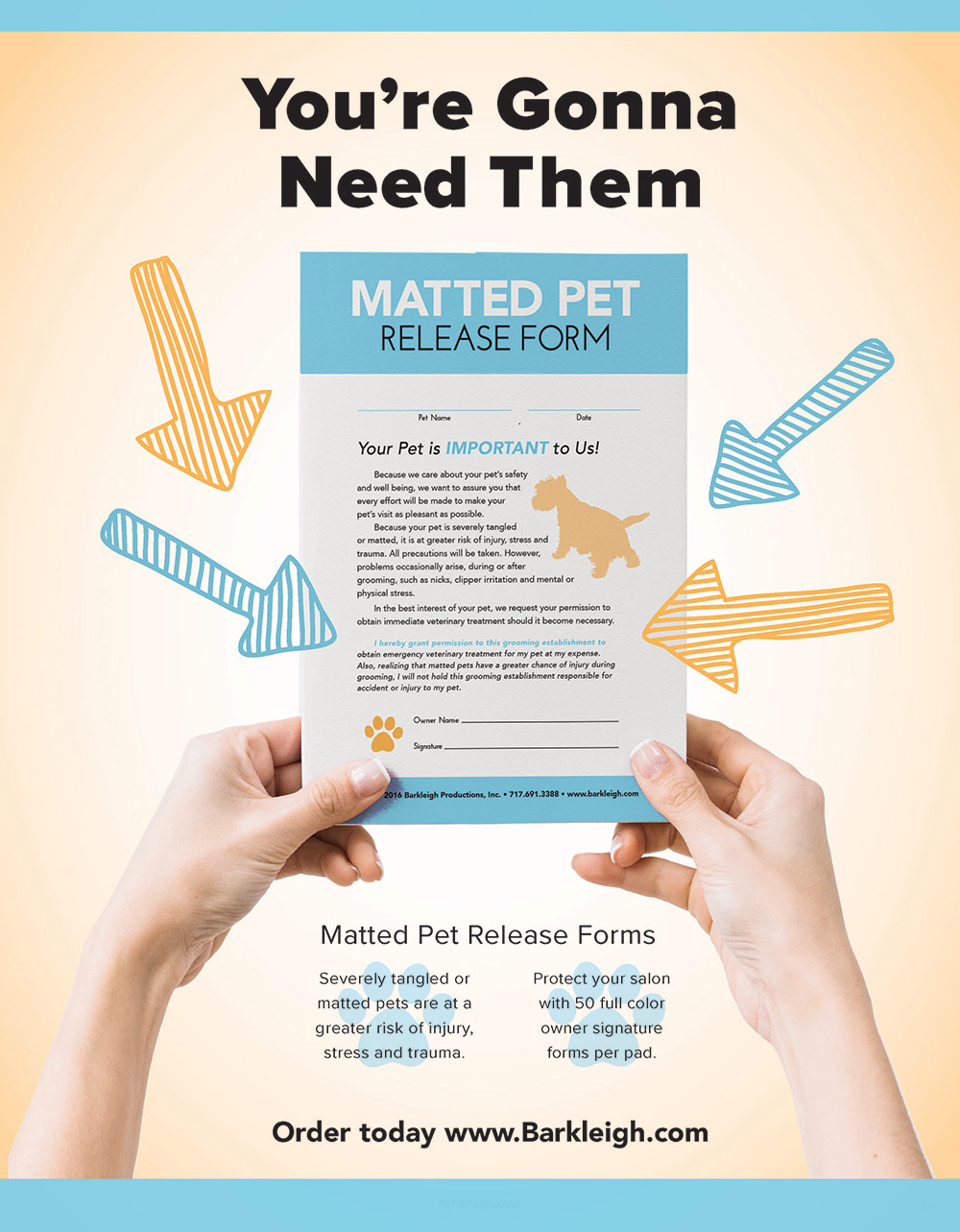
info@barkleigh.com
(717) 691-3388
Editorial
rebecca@barkleigh.com
Advertising
james@barkleigh.com
- Animals Ink19
- Barkleigh – Subscribe36
- Barkleigh Store – Kennel Sales Slips28
- Barkleigh Store – Matted Release Form33
- Barkleigh Store – Social Media Release24
- Barkleigh Store – Sympathy Cards23
- Barkleigh Store – Text Alerts31
- Barkleigh Store – The Rosetta Bone25
- Black Diamond Radio7
- Cool Dog Wash Tubs11
- Destination Pet 13
- Groom Expo West21
- Pet Biz Insurance17
- Pet Boarding Certification20
- Pet Business Insurance12
- Pet Lift2
- Puppy Playground8



DVM, DACVS-SA

Jenifer Chatfield
DVM, Dipl. ACZM, Dipl. ACVPM

CVT

DVM, DACVECC
-
STAFF
- Publisher
Barkleigh Productions, Inc. - President
Todd Shelly - Vice President
Gwen Shelly - Chief Operations Officer
Adam Lohr - Executive Editor
Rebecca Shipman - Art Director
Laura Pennington - Sr. Graphic Designer
Brandi Aurelio - Jr. Graphic Designer
Carlee Kubistek - Web Master
Luke Dumberth - Marketing Consultant
Allison Smith - Social Media Coordinator
Cassidy Ryman - Digital Media
Evan Gummo - Director of Marketing & Client Relations
James Severs - Accounts Manager/ Executive Assistant
Karin Grottola - Administrative Assistant
Britany Smith

DVM, CVPM






e all have wonderful clients that make our days brighter; clients that take our advice and do their best to take excellent care of their pets. These are the names that make us happy when we see them on our schedule. These are the clients that make us cookies and send us Christmas cards. Wouldn’t it be great if all of our clients would be like our favorite ones?
Now, people are people and they are all different, so making 100% of clients happy 100% of the time is never going to be possible. But, we can make more of our clients happy more of the time, and it is not hard. It boils down to addressing all of the ways in which clients perceive us. Let’s examine this closer…
We all have five senses that we use to gain information about our world: Sight, Smell, Hearing, Touch and Taste. Here are some ways that we can leverage all our clients’ senses to take in the positive messages that we want to spread:
Walk through your clinic with the eyes of a client. Even conscript a family member or friend to come along. We know that people make judgements quickly based on visual perception, which is a phenomenon called the “Halo Effect.” According to Psychology Today, the Halo Effect is “cognitive bias that occurs when an initial positive judgment about a person unconsciously colors the perception of the individual as a whole.” We can use this bias to help make sure that our clients view us in the best possible light.
Do you have a front sign with a message board? Could you show your personality on the board with regular messages? People will start to associate you with a smile and will see that you love your job. Human beings are drawn to others who are happy and fun. For the most part, veterinary professionals are fun and our patients bring out the best in us, so let people know! Be a place that people walking into and driving by will feel good vibes about.
Is your parking lot ample and clean? Is there something that you could do that would be easy and affordable that would make your parking lot better? A poop bag dispenser? A cute outdoor sign welcoming clients and listing which species you treat might be a nice addition. An easel with a chalkboard could be easily changed by your team with a personal message. A personal touch goes a long way, and veterinary teams are jam-packed with creative and artistic people that are happy to share their talent.
When clients (or potential clients) come in your door, they should see friendly, happy, confident people. Train your team to smile even when they are answering the phone (people can tell). Write scripts that you like to answer your most frequent phone questions and go over them at team meetings. Ask your team for input. When the team helps write the script, it is more authentic and from the heart (and easier to remember). Some areas that might be addressed include questions about price or product recommendations. Make sure your team feels confident in your pricing strategy so they can explain things well.
What about the items they see? Make sure that pictures and posters are framed and hanging straight. Any retail items should be displayed in a pleasing, symmetrical way. Remove any expired products. Clients might think that you don’t care if they see expired, damaged or dust-covered products in your clinic. (And we all know that veterinary professionals do care. We are just very busy and might overlook something.)

![]() What is That Smell?
What is That Smell?
 According to Feng Shui for Real Life :
According to Feng Shui for Real Life :

Vanilla scent is great for your front door, as it evokes a sense of well-being.

Lavender scent is also a good choice because it has been suggested for relaxation.

![]() The Sound of Silence
The Sound of Silence
A study published in 2021 by the Proceedings of the National Academy of Sciences looked at the health benefits of natural sounds, like birds and running water, on human beings. The scientists found that natural sounds reduced blood pressure, decreased pain and improved cognitive performance.1 Although this study was based on findings in national parks, we can use what they learned to create a better experience for our clients. It is fairly easy and inexpensive to install small speakers around our clinic to project nature sounds. Science tells us that it will create a better experience for the people and the pets.
![]() Magic Touch
Magic Touch
According to the principles of Feng Shui, our feelings are impacted by the things around us. If our clients can sit in comfortable chairs, it improves their impressions and feelings about us. The artwork on the walls should depict happy people and loveable pets to evoke positive feelings. All the furnishings should be in good repair, because shabbiness can send the wrong message and imply that you don’t provide the highest standard of care.
![]() Taste of Success
Taste of Success
While veterinary clinics are not generally associated with human food, we can garner inspiration from those favorite clients of ours who bring us goodies. Why not spread that good cheer in return? Keep it simple by offering a self-serve coffee station and maybe some locally made (human) treats, but be sure it is clearly noted they are not for pet consumption, and avoid stocking any that contain ingredients that may be toxic to pets. Of course it’s a good idea to have some treats out for pets, too!
Creating a more pleasant veterinary visit starts with a walkthrough of your clinic with new eyes. See, smell, hear, touch and taste what your clients do, and then take it all to the next level. And don’t forget, your team and your patients will also benefit from these changes!

- Buxton RT, Pearson AL, Allou C, et. al. (2021, April 6). A synthesis of health benefits of natural sounds and their distribution in national parks. Proc Natl Acad Sci USA. 118(14): e2013097118. doi: 10.1073/pnas.2013097118. PMID: 33753555; PMCID: PMC8040792.
- Jourard, S. M., & Rubin, J. E. (1968). Self-Disclosure and Touching: A Study of Two Modes of Interpersonal Encounter and Their Inter-Relation. Journal of Humanistic Psychology, 8(1), 39–48. https://doi.org/10.1177/002216786800800104



ood nutrition is foundational for overall health. Eating a healthful diet helps prevent common illnesses, supports and boosts the immune system, and positively influences the composition and function of bacteria that live in the gut microbiome.
The gut microbiome is a community of bacteria, fungi, and other microbes that live in a pet’s digestive tract and are essential for good health. The prenatal environment is essentially sterile and the development of the microbiome begins during birth. Much like in humans, the initial gut microbiome of a cat or dog reflects the microbiome of their mother due to the ingestion and inhalation of her native bacteria during birth and nursing. These early life events are foundational. From there, the gut microbiome evolves over time with exposure to different environments, littermates and human caretakers. As a pet grows and matures, diet plays a key role in maintaining the environment necessary for the beneficial microbes of the gut to thrive.
There are many different kinds of microbes in a pet’s gut microbiome, and each kind requires certain nutrients to survive. Some specialize in digesting complex carbohydrates, others digest proteins and some thrive on sugar. As a result, the macro-nutrients (carbohydrates, fats, proteins and fibers) in the food that pets eat influence which bacteria thrive in their gut. When a diet is overabundant in one macronutrient versus another, this can shift the natural balance of the bacteria in the gut, leading to an imbalance or dysbiosis.
A gut microbiome is considered imbalanced when it is missing beneficial bacteria, has too many harmful bacteria or does not have enough different types of bacteria. When a pet’s gut is out of balance, some of the gut’s important functions don’t work as well and can affect the overall health of a pet. Much like an improper diet, factors like disease, age and medications—especially antibiotics—can contribute to the development of an imbalance in a cat or dog’s gut.
Many clients are surprised to find that their pet’s symptoms are often associated with imbalances in the gut microbiome. The majority of clients correctly assume that common conditions like diarrhea and vomiting are related to the gut, but few realize that health issues like constipation, itchy skin and bad breath can also be associated with an imbalance in a pet’s gut microbiome as well.
If the nutrition in a pet’s diet is balanced, yet he or she still has symptoms of digestive health issues, a food intolerance or allergy may be a factor. Food sensitivities are quite common, and a change in diet may resolve the symptoms if the pet is sensitive to a particular ingredient in the diet.
The State of the Gut Report1 presents the results of a survey of more than 2,000 cat and dog parents who were asked what they think about gut health in general, how various factors impact their pet’s health, and what they can do to support and improve a pet’s gut health. The findings reveal that many pet parents are unaware that the use of antibiotics can contribute to significant, long-lasting imbalances in the microbiome. Regular microbiome testing can help bring those imbalances to light, allowing pet owners to address them before they begin causing troublesome symptoms.
In the survey, it was found that one in six dogs and one in seven cats has undergone antibiotic treatment within the last year. Using effective alternatives to antibiotics, such as Fecal Microbiota Transplantation (FMT), can help to rebalance the gut without the risk of harmful side effects. A conservative approach to antibiotic use is an important way to maintain the pet’s gut microbiome.

In the survey, pet owners were asked to report any exposure to risk factors that could have detrimentally impacted their pet’s microbiome over a 12-month period. Not surprisingly, exposure to antibiotics was one of the two top risk factors reported for both cat and dog owners. A change in diet was the other top risk factor associated with a gut imbalance.
When diet changes occur, shifts occur in the microbiome as well. Depending on the type of diet, these shifts in the microbiome can be beneficial or detrimental, as certain bacteria will thrive under different conditions.
For example, Fusobacterium is a group of bacteria that help dogs and cats digest protein in their diet, but if a diet is too high in protein content and lacks a sufficient amount of fiber, Fusobacterium will overgrow and can cause diarrhea and other signs of GI distress.
On the other hand, the Prevotella genus is fundamental for the breakdown of carbohydrates in the diet. However, if a pet’s diet is too high in carbs and has insufficient protein, Prevotella can overgrow and trigger inflammation. Again, elevated levels of this beneficial genus can lead to GI distress and has been linked to patients with inflammatory bowel syndrome.
This survey has helped reveal that clients do truly care about the gut health of their pets, but navigating the world of diets and nutrition can be tricky. With extra guidance on the importance of a properly balanced diet and how it affects the microbiome, clients can make an informed decision that will help improve gut health and the overall health of their pet.
References
- 2022 State of the Gut™ Report presented by AnimalBiome.stateofthegut.com



Photos provided by Dr. Scarlett Magda
e are here to be advocates for the animals and to ensure that their health and safety is our top priority. And by keeping them healthy, we can help improve the health of humans. Since an estimated 75% of new or emerging infectious diseases originate in wildlife, advocating for their health and well-being keeps us all healthy,” states Dr. Scarlett Magda, winner of the 2023 AVMA “Global Veterinary Service Award.”
Dr. Magda was recognized for her work with global animal welfare organizations, including Veterinarians International (VI), of which she is the co-founder. The organization helps build infrastructure within communities and provides immediate aid and veterinarian training. She also spent five years on the board of Veterinarians Without Borders Canada during vet school, an experience which helped her understand global health and gave her a foundational framework for helping.

“Dr. William Karesh coined the term ‘One Health,’ and it is an honor to co-create VI with him,” she continues. “The work he does with the DOD, CDC, and WHO, amongst many others, beautifully demonstrates the awareness and implementation of One Health at the level of the world’s leading authorities.
“There are also entire institutions dedicated to One Health, and it’s exciting to see One Health implemented in every veterinary school globally. We are in the process of working with the University of Nairobi and Egerton University to develop a One Health program for final-year veterinary students so they are more prepared upon graduation,” Dr. Magda adds.

“The many wins, whether they are big or small, are what keep us going,” Dr. Magda states. “Knowing that a simple piece of equipment like an X-ray machine can save countless lives by assisting doctors with making important decisions is a rewarding feeling that propels us through the most challenging of times.”
Aside from the gratification of contributing to the greater animal welfare, Dr. Magda acknowledges the veterinary profession’s current mental health challenge.


Another way that VI supports the mental health of veterinarians is through their well-being revitalization retreats. In addition, Dr. Magda emphasizes the importance of veterinary healthcare professionals taking care of themselves first.
“Ensuring I make time to practice yoga outside and meditate barefoot by the trees or in nature is vital for me; this allows everything else to function optimally for me,” Dr. Magda adds. “By caring for my body, mind, and spirit, I am able to show up in my highest self and serve.”
By filling her own cup, Dr. Magda says she can give her full attention to her varied workdays, where no two days are the same.

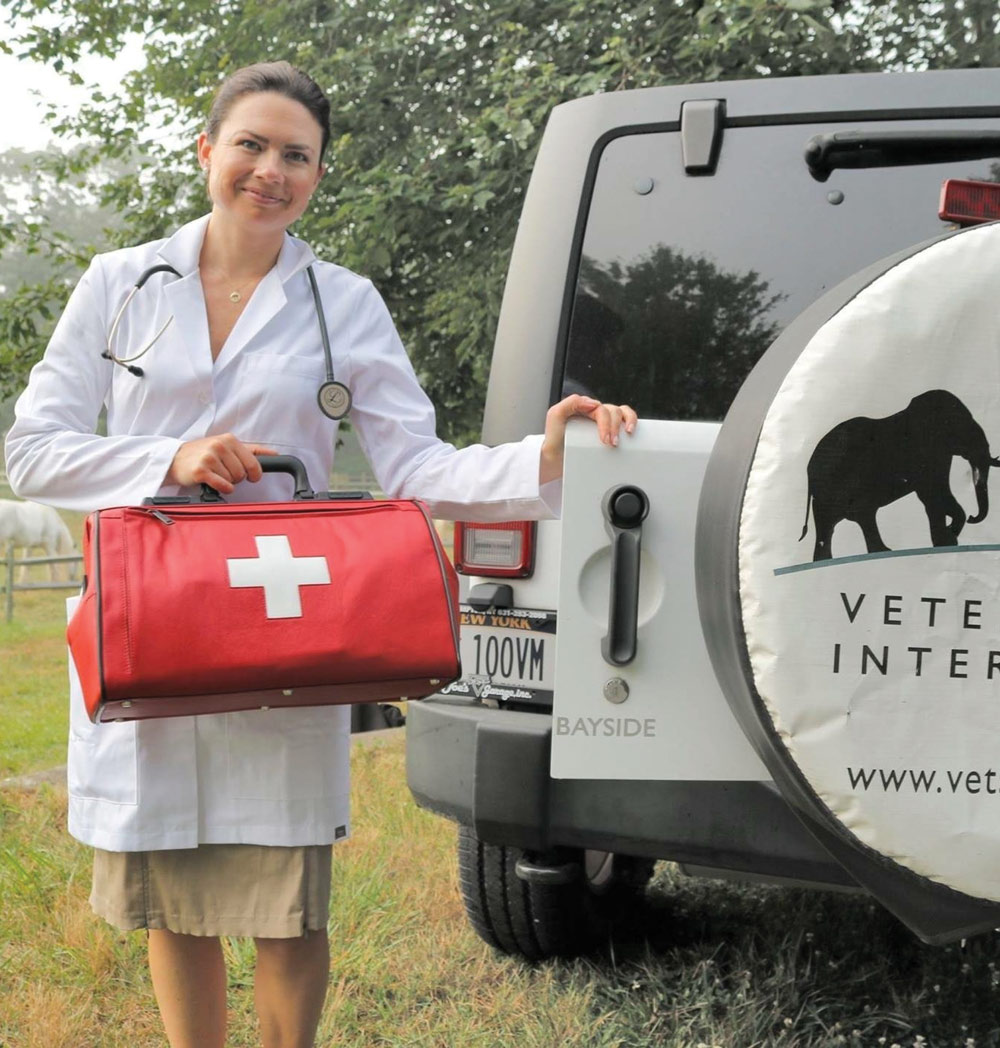
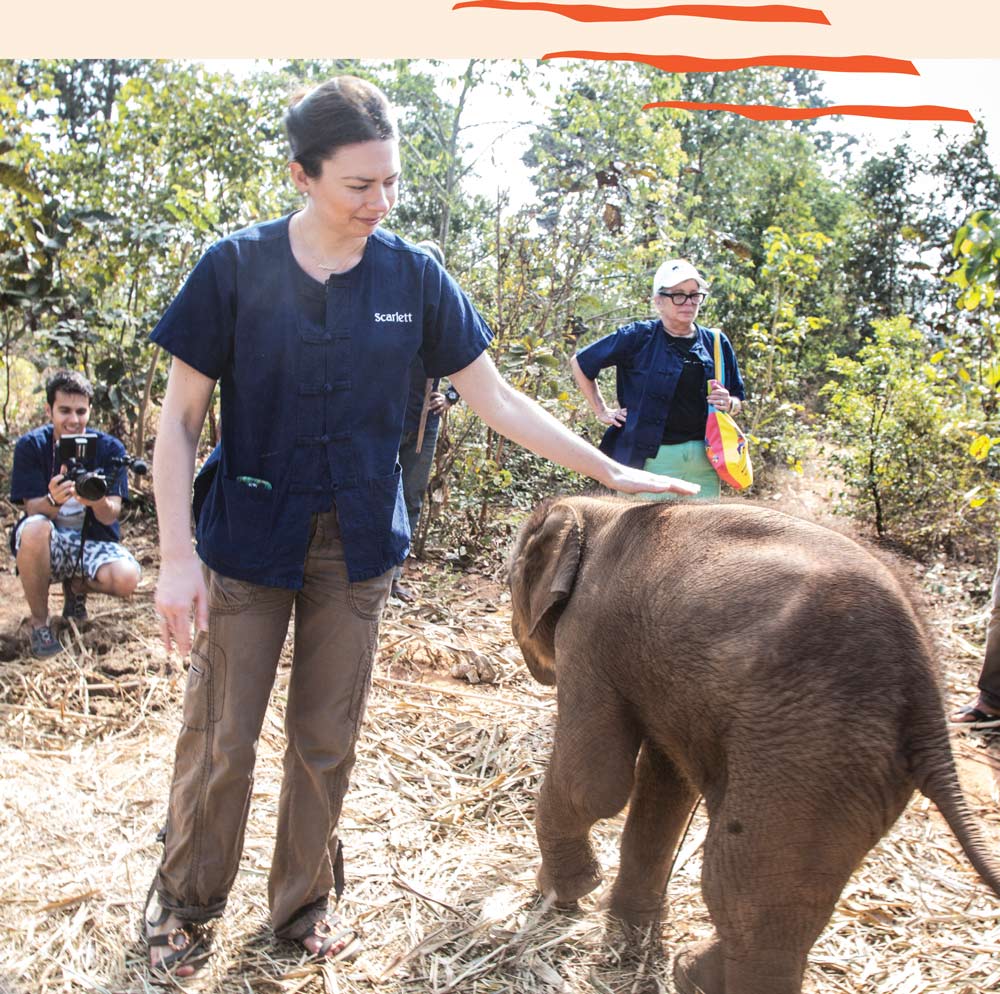


Dr. Magda concludes by offering this advice for those considering a career in the veterinary field:
“I recommend they know that they are the voice for those who cannot be heard by the majority of today’s society,” she says. “By being an advocate, they have tremendous power to heal and influence. The values they hold dear should be honored and practiced even in the most difficult times. This is how positive change happens.”



or a lot of us, becoming a veterinarian was a calling; something we always knew we wanted to do. We had this idea of what a vet’s life would be like—helping animals all day long, of course. We barely thought about the hours, the admin, the business side or the time spent away from family.
Fast forward 15 years after qualifying, married with a family, and the choices we made when we were younger don’t always fit into our lifestyles anymore. We still want to help animals—but we are swamped! We can barely manage to meet one set of demands on our attention, never mind all the others.
When my three kids were little, I was determined this would not be me. I wanted to be present for my children; to attend those midweek sports days and galas; to be there when they were doing homework, needed a lift or wanted to chat. Yet I still wanted to earn an income.
Eventually, I found a way to use my professional knowledge while working flexible hours from home. It can be done, and without financial sacrifice! Anyone with professional skills can do it, simply by packaging their skills for an online world.
The most obvious first option is teleconsulting. Companies have sprung up all over the world offering online consultations. Vets consult for them, making themselves available for shifts during the day or night. It’s the closest you are going to get to consulting from the comfort of your home. This is especially valuable to vets who have mobility issues or health problems which prevent them from being able to operate and handle animals.
Then there’s the option I took: running your own online animal-related business. This is where I found my niche, and I now have several income streams from the online courses, conferences and membership groups I run, plus product affiliations (and I only affiliate with products I believe in).
My ceiling for earning potential rose drastically. The sideline businesses took up a lot of time at first, but eventually I could employ people to run them and, unlike my veterinary practice, they didn’t always need me. But I was looking for a business that allowed me to be completely flexible; I wanted to work from home, but also from anywhere in the world. As a family we love to travel, so this flexibility was important to me.
The idea of starting a different kind of online business arose when I recognized a real need among my clients, some of whom were driving three to four hours to see me for animal rehabilitation. What they wanted was information and basic skills—something they could use to help their dogs between visits. So, I developed an online, 12-week course designed for arthritic dogs. It gave owners a schedule of basic therapeutic exercises that would strengthen muscles, correct compensation issues and drastically improve their dog’s quality of life.
The best part about creating an online course is that, after the initial hard work of developing and marketing, your income becomes more passive. Your earning potential has no ceiling and you are able to work when it suits you.
Today I have a number-one online businesses, work four to five hours a day, four days a week, from anywhere I happen to be. I fetch my kids from school, take them horseback riding and never miss a gala or sports day.
The online world of business for animal professionals holds huge potential—and there is room for many more of us. Why not diversify your income?






We’re professionals, but that does not preclude being astute business people, too! As digital processes move more and more into the world of work, we need to ride that wave to our own advantage. There is really no limit to our earning potential if we think creatively and learn a few good tech skills (which can easily be learned online).
I hope these ideas have inspired you to diversify your income while benefitting more animals!



By Eder Ribeiro
magine coming to work on a Monday morning with a full slate of patients awaiting care, yet none of your computer systems work and all your files are encrypted. Sadly, this is becoming a common occurrence among even the most cyber-cautious veterinary clinics.
The pervasive misperception that some businesses are too small or do the kind of work that won’t attract cybercrime continues to stun vet clinics when they fall victim to a cyberattack. The value of the average clinic’s digital assets—from the doctor’s personal finances to its client contact and payment information—is often too tempting for cybercriminals to ignore.
When cybercriminals find their way into your systems, it becomes difficult (if not impossible) to offer the same level of care for patients while trying to mitigate the fallout of a cyber incident. Whether ransomware, social engineering or breaching of one of your vendors, the schemes deployed by today’s digital thieves have far-reaching impact for clinic owners, staff, vendors and clients.
Thankfully, most cyber incidents can be resolved with the help of professional cyber incident response teams. How difficult or lengthy that resolution becomes depends largely on a clinic’s preparation and the quality of the contingency plan that’s prepared in advance.
Let’s review some of common cyber incidence response tactics and the steps for planning ahead that make them easier to deploy following a cyber intrusion.
1. Vet Your Vendors and Set Up External Connection Permissions.
Recovery Instructions: As soon as they are notified of a cyberattack, an incident response team typically will launch a forensic investigation to identify the criminal’s point of entry. As mentioned above, third-party vendors pose a high penetration risk to vet clinics. IT-managed services can be particularly popular targets for cybercriminals because they hold the keys to the digital kingdoms of many individual clients. Breaking into a single-managed services provider may give threat actors access to hundreds of external systems, all for the effort of one.
The Plan-Ahead Prescription: Understand which third-party providers have access to your systems and ask how they secure those connections. Insist on connection requests being a regular part of your engagement. No one should be able to log into your local network without an authorized staff member pressing a button to let them in every single time.
2. Prepare a Cyberattack Contingency Plan.
Recovery Instructions: When ransomware is in play, your clinic may be contacted by the threat actor directly. They will ask for payment in return for unlocking systems they’ve locked or not exposing the data they’ve stolen on the dark web. You may want to ask your incident response team to step in, communicating with the threat actors on your behalf. Specialized expertise, experience in negotiating with ransomware threat actors and sometimes even specific knowledge of the actor or actors behind the attack equips these professionals for such negotiations.
The Plan-Ahead Prescription: Designate a single point of contact (with a backup, should that person be unavailable) who has the authority to pay or decline a demand for ransom. Formalize this authority by including the individuals’ names or positions in a written cyberattack contingency plan. Be sure to keep a hard copy in the office, as digital-only plans could be locked down during a cyberattack. Train staff regularly on the policies and procedures outlined in the contingency plan. If possible, perform an annual tabletop exercise on your plan.

No one should be able to log into your local network without an authorized staff member pressing a button to let them in every single time

The Plan-Ahead Prescription: Keep a list, documented within your contingency plan, of your regular vendors and their contact information. Be exhaustive, including everyone from your landscaping crew to your patient management software provider.

Consider a cyber insurance policy that includes services, such as call center support and identity theft protection memberships, for your clients following a covered incident

4. Consider a Cyber Insurance Policy.
The Plan-Ahead Prescription: Maintain off-site backups of client lists so any who are impacted can be contacted as recommended by your incident response team. Consider a cyber insurance policy that includes services, such as call center support and identity theft protection memberships, for your clients following a covered incident. These policies should include access to specialists who are already vetted, eliminating the need for additional effort and pressure during an already stressful time.
5. Update and Validate Backups Regularly.
Recovery Instructions: Speaking of off-site backups, one of the most valuable contributions your internal team members can make—especially in preparing for ransomware—is to create backup files that can be used to rebuild your digital environment. The quality of your backups is one of the most significant factors in determining the amount of time, energy and cost that a rebuild will take.
The Plan-Ahead Prescription: Do not rely solely on your managed services provider for backups; after all, if they suffer a security incident, your backups may be locked down alongside theirs. In addition, make sure that your backup strategy checks two boxes. All files should be 1) regularly updated and 2) regularly validated. A corrupted backup is a worthless backup. A common mishap is running out of backup storage without realizing it. Depending on the level of backup automation and the way it’s configured, a vet clinic’s backups could be failing to upload for months before anyone realizes.
Veterinary clinic owners would not be blamed for believing their businesses are “too small to hack.” Yet that is simply not true. In fact, fraud rings often view smaller as better because small- and medium-sized businesses often lack adequate resources and expertise to fight back against a cyberattack. The main motivator for most threat actors is money. If your business generates revenue, it is a worthy target. Even small ransoms quicky add up over time.
By taking the above plan-ahead prescriptions, you can reduce the impact of a cyber incident. Doing so will help ensure you remain a reliable, trusted caregiver for pets and their families—no matter what is happening behind the screens.
References


ccording to a survey by the Corporate Executive Board, 95% of Human Resource managers say they do not like their company’s performance review process.1 Would you agree? Sixty-five percent of employees say the performance review is not relevant to their jobs. Would your employees say the same?
 Heavily focused on activity and not outcomes.
Heavily focused on activity and not outcomes. Reviews what happened in the past.
Reviews what happened in the past. Too expensive in “people hours” and time-consuming.
Too expensive in “people hours” and time-consuming.
 Lacks consistency from manager to manager, hampered by personal biases.
Lacks consistency from manager to manager, hampered by personal biases. Creates awkward dynamic and competition between managers, employees and co-workers.
Creates awkward dynamic and competition between managers, employees and co-workers.Now that you know what is sabotaging your performance evaluation proceSs, what are the options for changing it? It is possible to benefit patient care, client service, team member performance and business success with your evaluation process.
Consider this: How many of you with Fitbits or other tracking metrics would succeed in your weight-loss or exercise program if the apps only give you a yearly report? You are blindly performing exercises and entering diet data for an entire year without knowing if it has a positive effect on the goal you hoped to achieve. Then, at the end of the year, you receive the report only to find out you failed to perform on one aspect and did great on another. Now what? How do you map out your next step? Did the medical procedure you had that past year affect your numbers? What about the fact that you started yoga? How would the exercise and diet recommendations have changed if the app knew this?
Annual performance evaluations are essentially the same thing—blindly performing a job, experiencing changes in the economy or business goals and changing personal focus on skills all affect job performance. Simply talking about it once a year isn’t helping anyone, including the business.
Here are some steps to take to change the performance evaluation process:
For instance, the practice discovers a problem with the wages paid as a percentage of income. The decision is made to put an end to all overtime hours. At the annual review, managers are told they failed to control the expense, and the team is told that raises cannot be given. How would this scenario change with ongoing feedback? At the end of the pay cycle, the numbers are reviewed, situations resulting in overtime scheduling are discussed, options are considered, certain team members are trained to perform new tasks so as to prevent overtime, and managers are now aware and able to respond appropriately to scheduling changes. Linking performance to the strategic plans of the business is a good thing.

For example, your practice heard about Fear Free and has decided to move forward with certification. None of this was discussed last year at any of the performance evaluations. Do you wait until the annual evaluations this year? Of course not! You need to get moving on this so you inform the team about the plan and map out the modules that everyone needs to take. Now, do you wait until the annual review to see how everyone is doing? No! You organize regular updates, training sessions and reviews, and you monitor how the implementation process is coming along and confirm what resources different team members need to complete the goals.
What is important to understand is that real-time feedback is fluid, much like what is going on in the industry. Changes in the economy and medical developments can occur quickly. You need to be able to respond to these changes, and you will be able to shift employee goals throughout the year as needed. Waiting until the annual evaluation does not allow you to do this and instead puts the business at risk of delivering poor service, in addition to conducting irrelevant performance discussions based on goals set almost a year ago.5
How many times have managers filled out lengthy forms only to have them filed and forgotten? The real-time feedback process enables smaller segments to be discussed more frequently, progress noted and roadblocks removed.3 Does this real-time feedback remove the “dread” from dreaded performance evaluations? Let’s review…
- Focus has been shifted to outcomes.
- What is happening now is reviewed, which is part of business strategy and personal improvement.
- It’s not as time-consuming to conduct quick updates.
- Consistency is improved, as everyone knows what is expected.
- Communication between managers and team members is improved.
Do not be one of those companies that spends time on inadequate annual evaluations; instead, spend time on developing the skills and knowledge of your team in real time.
- Meinert, D. (2015, April 1) Is It Time to Put the Performance Review on a PIP? SHRM. https://www.shrm.org/hr-today/news/hr-magazine/pages/0415-qualitative-performance-reviews.aspx
- Kenny, G. (2016, February 2). Fixing Performance Appraisal is About More than Ditching Annual Reviews. Harvard Business Review. https://hbr.org/2016/02/fixing-performance-appraisal-is-about-more-than-ditching-annual-reviews
- Wilkie, D. (2015, December). If the Annual Performance Review is on Its Way Out, What Can Replace It? SHRM. https://www.shrm.org/resourcesandtools/hr-topics/employee-relations/pages/performance-reviews-dead.aspx
- Duggan, K. (2015, December 15). Six Companies that are Redefining Performance Management. Fast Company. https://www.fastcompany.com/3054547/six-companies-that-are-redefining-performance-management
- Zillman, C. (2016, February 1). IBM is Blowing Up Its Annual Performance Review. Fortune. http://fortune.com/2016/02/01/ibm-employee-performance-reviews/



By Renee Machel
ou may be familiar with the common signs of burnout, such as an overall sense of exhaustion, reduced enthusiasm or lower productivity. Even your moods can lean toward cynicism, irritability, emotional outbursts and, at times, feeling helpless or defeated. But one uncommon sign of burnout may be displaced conflict.
Displaced conflict means you may find yourself arguing more frequently about things that are not important or not really the issue. It can also happen with people who you genuinely care about, but they are not the true source of your dissatisfaction, yet they get the brunt end of your dismay about life.
Caregivers of any type are at higher risk of burnout and compassion fatigue, especially during busy times like around the holidays, which are chock-full of distractions and attention–grabbers. Below I will share with you some simple tips to help you fully enjoy your holiday season and feel rejuvenated and realigned as we all individually and collectively move into the new year!

Now is a great time to give yourself credit for the times you already have shown up as your best self this year—you don’t have to wait for others to give you the recognition you deserve!

For one, use every medium available to educate your clients. This saves a ton of time and mental bandwidth because clients will get the same message across the board, and a lot of those clients will get it the first time. Any changes in schedules or hours, current or future price changes or specials, and policy or procedure changes all can be addressed via email, text, social media, phone, in exam rooms (verbally or on corkboards) and on invoices at checkout.
Using the awareness you have honed in the first exercise, write out your most stressful conversations of the past month. Chances are, this is not the first or the last time that you’ll have that conversation. How could you have handled it differently? Is there a sense of calm or level-headedness that would have eased things? Light joking can prove useful with the right client if you already have a rapport with them.
What are new ways you can establish trust with your clients to ethically influence their decision-making and behavior toward you or your team? Ask your teammates if they’ve been encountering similar situations. If you find that it’s a pattern, policies may need to be changed. And if not, you can share best practices and try them on for size during your next interaction.

As you pull these levers, others will switch off, and it will become much easier to put yourself first. Yes, I know it is not how we caregivers have been conditioned to operate, but being kind and compassionate to fill your cup first allows you to effortlessly radiate compassion for the pets and others you care for.
We can often lose ourselves in the commotion of the holidays, with the feeling of “I need a vacation from my vacation.” Set aside time for you this holiday season. Your days at work and days off should meet your now conscious needs, whatever they may be. Set yourself and the ones you care about up for success. But first, define it.


Taking place January 13-17 in Orlando, FL, VMX 2024 will become a world’s fair—veterinary style—featuring exhibits, culture, innovation, and the diffusion of knowledge, plus entertainment and thrills designed to surprise and delight around every corner. navc.com/vmx


This program is designed to harness the expertise and creativity of individuals, startups, and organizations to address key issues in animal health and develop groundbreaking solutions to benefit companion animals worldwide. www.ceva.com/innovation


This easy-to-use cheek-swab kit provides accurate age prediction backed by science. www.mydnage.com
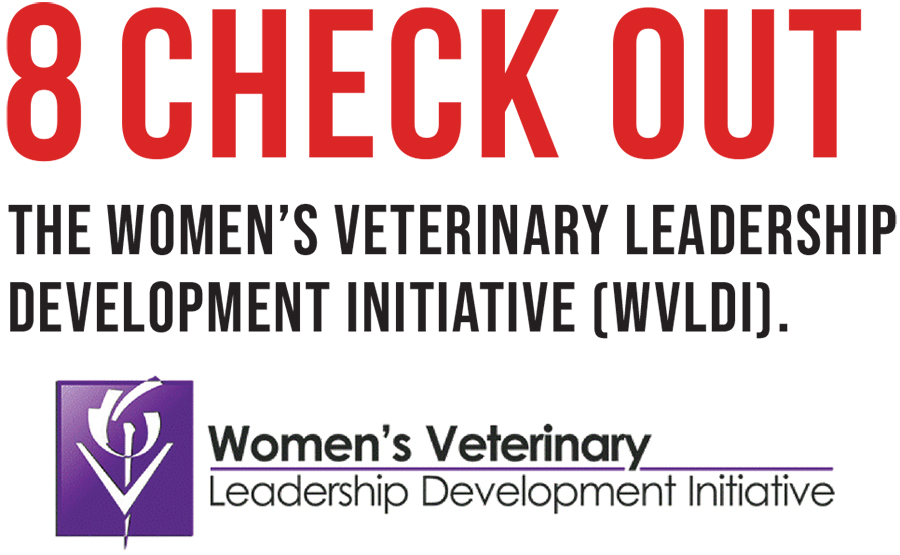
Their mission is to be a strong and impactful voice by supporting women and allies seeking leadership positions, providing professional development and educational content, developing student leaders, and engaging in social media discussion. wvldi.org


Learn from two experts in veterinary medicine and expand your knowledge on Neurology and Infectious Disease/Preventive Medicine January 25-27 in St. Kitts West Indies. vetvacationce.com



2 leading trade magazines for the pet professional in your life with all the content to assist them in keeping your pet healthy, happy and beautiful.
online or in print at www.barkleigh.com
Facebook.com/
barkleigh.prod
Twitter:
@barkleighinc

